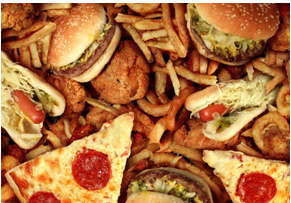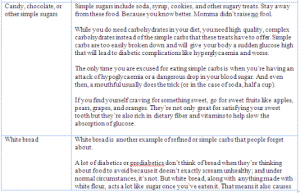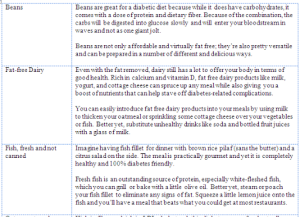Monthly Archives: June 2014
The Easy Diabetes Diet Plan Cookbook – Breakfast Burrito
Breakfast Burrito
This is an excerpt from the book: The Easy Diabetes Diet Plan Cookbook
The Easy Diabetes Diet Plan Cookbook – Breakfast Recipes
Breakfast Recipes
And if you do find a recipe that’s more elaborate than the rest, you can trust that it was worth slipping it in with the rest of the recipes. Who knows, you might want to cook for that special someone one of these days.
This is an excerpt from the book: The Easy Diabetes Diet Plan Cookbook
The Easy Diabetes Diet Plan Cookbook – Diabetes and Alcohol
The one thing you can’t have though is alcohol, even if you’re hanging out with your best friends. Alcohol is a big no-no for those who have diabetes because it can actually lead to both hyperglycaemia and hypoglycaemia.
In the initial stages of drinking alcohol, the glucose levels in your blood will rise. But once you’ve taken in an excessive amount – which, for diabetics, is a mere one to two cans of beer – your blood sugar will actually drop, causing a hypoglycaemic attack.
Alcohol also poses an added danger because it interferes with both injectable insulin and oral medication for diabetes.
The Easy Diabetes Diet Plan Cookbook – Portioning Properly
The Easy Diabetes Diet Plan Cookbook – Best and Worst Food Choices
Admittedly, packaged food is more convenient. You open a can of spaghetti sauce, toss it in with pasta and you have a meal; what could be easier? But easy and convenient usually don’t mean healthy and good
for your body. Have you noticed how affordable packaged food is? Packaged food companies cut corners where they can to give you cheap and easy to prepare food that also tastes good and that usually means loading it up with saturated and trans fat, salt, sugar, preservatives, and simple carbohydrates. That’s what you have to keep in mind the next time you find yourself reaching for that bag of frozen chicken nuggets.
The Easy Diabetes Diet Plan Cookbook – Food to Stock Up On
The Easy Diabetes Diet Plan Cookbook – Eating Healthy and Well as a Diabetic
Eating Healthy and Well as a Diabetic
If we haven’t said it enough, eating healthy and well is the key to living a normal life with diabetes. That means saying goodbye to fast food favorites like burgers and fries loaded with ketchup and that large coke to go with it. You and that ice cream sundae with chocolate fudge? Never gonna happen. Your days of eating breakfast at a McDonald’s or a Taco Bell are behind you and belong in another life. But how exactly should you get started on eating better quality food? What makes for a good diet plan for a diabetic?
This is an excerpt from the book: The Easy Diabetes Diet Plan Cookbook
The Easy Diabetes Diet Plan Cookbook – Digital Scale
Digital Scale
Because of the importance of portioning, a digital scale is a must for every diabetic cook.
This is an excerpt from the book: The Easy Diabetes Diet Plan Cookbook
The Easy Diabetes Diet Plan Cookbook – Measuring Cups and Spoons
A good and healthy meal hinges on proper portioning and you need to measure out practically everything to make sure you’re not overeating.
The cups are for measuring juice and other beverages and you can even use them to measure food as well (though I would recommend the digital scale). You will need the measuring spoons for seasoning and for spices.










